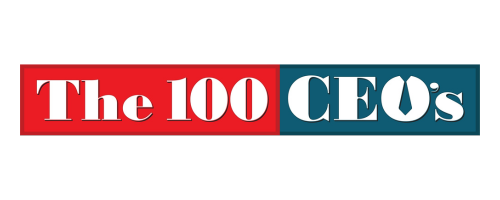CEOs have a remarkable responsibility that involves navigating a complex landscape of business dynamics, but when you’re a female CEO, the challenges can be even more pronounced. In my experience, women in executive roles often face barriers ranging from gender bias to limited networking opportunities. Yet, many women rise to the occasion, transforming obstacles into stepping stones through resilience and innovative strategies. In this post, I will explore the distinctive challenges you may encounter as a female CEO and share insights on how to effectively overcome them.
The Landscape of Female Leadership
While the presence of female CEOs has gradually increased, the landscape of female leadership remains complex and challenging. It’s vital to recognize the unique barriers these women face, including gender bias and lack of representation, as well as the remarkable resilience they demonstrate to navigate such an environment. As I investigate into this landscape, I’ll highlight how women are breaking through these obstacles and redefining what leadership looks like in today’s corporate world.
Statistics and Representation
Below the surface statistics reveal a persistent gender gap in leadership roles. Despite women making significant strides in various sectors, only a small percentage of Fortune 500 companies are led by women, highlighting the ongoing challenges of representation. As you explore these figures, it becomes apparent that female leadership is not just a trend but a vital element for the growth and sustainability of organizations.
Historical Context
One cannot understand the current landscape of female leadership without considering its historical context. For generations, societal expectations and systemic barriers have limited women’s roles in the workforce. While women have fought for equality and representation, many industries still reflect outdated norms that hinder progress. As I examine this history, I see how previous waves of feminism laid the groundwork for female executives today.
It’s important to recognize that the struggle for female leadership is deeply rooted in history. From the suffragette movement to the women’s liberation movement of the 1960s and 70s, each phase brought about a shift in societal attitudes towards women’s capabilities in leadership roles. The progress made by these pioneers ultimately paved the way for modern female CEOs to challenge stereotypes and assert their presence in boardrooms. However, knowing this history also reinforces the reality that there is still much work to be done in achieving true gender parity in leadership positions.
The Unique Challenges Faced by Female CEOs
Now, as a female CEO, I encounter various challenges that are often distinct to women in leadership roles. These hurdles exaggerate the complexity of decision-making and influence my strategic vision. Embracing these challenges, I constantly strive to find innovative solutions while empowering others within my organization.
Gender Bias and Stereotypes
Now, gender bias and stereotypes serve as significant barriers that I face as a female CEO. Society often imposes preconceived notions about women’s capabilities leading to scrutiny and unfair expectations. Here are some examples of hurdles I typically encounter:
- Limited access to networking opportunities
- Greater scrutiny for decision-making
- Challenges in obtaining equal pay
- Stereotypes regarding leadership styles
- Difficulty in gaining buy-in from predominantly male teams
After acknowledging these biases, I actively seek to dismantle them through advocacy and by promoting inclusive practices in my organization.
| Challenge | Impact |
| Gender Bias | Undermines authority |
| Stereotypes | Limits opportunities |
| Work-Life Balance | Increases stress |
| Networking | Hinders growth |
Work-Life Balance Dilemmas
Unique challenges emerge when balancing the high demands of being a CEO while fulfilling personal commitments. The pressure to excel in both areas often leads to feelings of guilt and overwhelm, making it challenging to prioritize my well-being.
Even though the quest for work-life balance can seem daunting, I have learned to establish clear boundaries and prioritize self-care. Creating a robust support network of mentors and peers has become critical while delegating tasks effectively allows me to focus on long-term goals without sacrificing my personal life. My experience underscores the importance of resilience and adaptability in navigating these dilemmas successfully.
Strategies for Overcoming Challenges
Some female CEOs face unique obstacles in the business world, but they have the ability to overcome them through effective strategies. By focusing on resilience and adaptability, these leaders can navigate complex environments, making informed decisions that lead to success. Emphasizing collaboration and building diverse teams ultimately allows for innovative solutions and drives positive change within their organizations.
Building a Support Network
With the right support network, you can navigate the challenges of being a female CEO more effectively. Surrounding yourself with mentors, peers, and advocates creates a safe space for sharing experiences and gaining insights. By actively engaging in networking opportunities, you can cultivate relationships that will empower you both personally and professionally, ensuring you have the guidance and encouragement needed to thrive.
Leadership Styles and Approaches
Any effective CEO must adopt a leadership style that aligns with their values and vision for the company. Female CEOs often embrace collaborative and empathetic approaches, fostering environments where diverse voices are heard and valued. This helps to build trust and loyalty within their teams, ultimately driving improved organizational performance.
Styles of leadership vary widely, but embracing a transformational approach can be particularly beneficial as a female CEO. Being adaptable and receptive to feedback allows for ongoing personal growth and the cultivation of an inclusive atmosphere. By prioritizing emotional intelligence, you can inspire your team while also navigating challenges that arise. This method encourages innovation and empowers employees to take ownership of their work, ultimately benefiting the organization’s overall success.
Case Studies of Successful Female CEOs
Many remarkable female CEOs have navigated their careers with determination and skill, setting inspiring examples for others. Here are some noteworthy case studies:
- Mary Barra, CEO of General Motors, led the company to achieve a market cap of over $50 billion in 2021.
- Ginni Rometty, former CEO of IBM, increased the company’s cloud revenue to $23 billion by 2020.
- Emma Walmsley, CEO of GlaxoSmithKline, successfully spearheaded a strategy that increased the company’s shares by 20% from 2017 to 2020.
- Sundar Pichai praised Phebe Novakovic, CEO of General Dynamics, for raising the company’s stock price by 30% since her appointment in 2013.
Lessons Learned
By analyzing the journeys of these leaders, I’ve seen that resilience, adaptability, and strategic vision are important for overcoming barriers in the business world. Each CEO showcased in this chapter faced unique challenges but leveraged their differences as strengths, which ultimately contributed to their success.
Impact on Organizational Culture
Besides the financial successes, female CEOs have significantly impacted organizational culture by promoting inclusivity, empathy, and collaboration. Their leadership styles often foster environments where diverse voices are heard and valued, leading to enhanced creativity and innovation in their respective companies.
Considering the influence of female CEOs, it’s evident that their leadership enhances workplace dynamics. For instance, organizations led by women tend to exhibit higher employee satisfaction and lower turnover rates. The cultural shifts resonate well within teams, empowering employees to take ownership and initiative, which is vital for sustained growth. By prioritizing an inclusive culture, these CEOs ensure that their companies not only thrive financially but also become committed to fostering a positive and productive work environment.
The Role of Mentorship and Sponsorship
Keep in mind that mentorship and sponsorship play a vital role in navigating the unique challenges faced by female CEOs. They offer guidance, support, and networking opportunities that can be pivotal in career advancement. With the right mentors and sponsors, you can gain insights into leadership strategies, receive valuable feedback, and broaden your professional circle, all of which are vital for success in corporate environments.
Importance of Female Role Models
An absence of female role models can hinder the aspirations of many women in leadership positions. Having visible role models not only inspires you to pursue your goals but also helps to demystify what success looks like for women in executive roles. Their journeys provide relatable experiences that resonate with your own challenges, creating a fellow-feeling and an encouraging environment for aspiring female leaders.
Creating Opportunities for Growth
Around female leadership, creating opportunities for growth is vital for overcoming barriers. Collaborating with mentors and sponsors can open doors to new experiences and professional challenges that stretch your capabilities. These opportunities often lead to increased visibility within your organization and can pave the way for future advancements.
Further, these opportunities can manifest in various forms, from participating in high-stakes projects to joining influential industry networks. By strategically aligning yourself with mentors and sponsors who advocate for your potential, you position yourself to seize those impactful moments. Engaging actively with your mentors not only helps you hone your skills but also equips you with the confidence to take on significant leadership roles. Ultimately, it’s about creating a support system that empowers your growth and drives your success in corporate environments.
Future Trends in Female Leadership
For female leaders, the future looks promising as organizations increasingly prioritize diversity and inclusion at all levels. This shift not only promotes gender equality but also paves the way for innovative leadership styles. As more women step into CEO positions, I anticipate a transformative impact on corporate strategies, with greater emphasis on empathetic communication and collaborative decision-making.
Emerging Leaders
After witnessing a significant rise in the number of women entering leadership roles, it’s clear that emerging leaders are reshaping the landscape. As I engage with these dynamic individuals, I see a strong desire to cultivate inclusive environments and challenge traditional corporate norms.
Changing Corporate Cultures
Leadership in the modern age demands a reevaluation of corporate cultures, driven largely by the input of female CEOs. This shift is characterized by more flexible work arrangements, enhanced focus on employee well-being, and prioritizing social responsibility. By fostering environments where all voices are valued, I believe companies will not only thrive but also attract top talent who align with these progressive values.
This evolution in corporate culture is vital for attracting and retaining diverse talent. I recognize that fostering inclusivity creates a more dynamic workplace where innovation can flourish. As you adapt to these changes, embracing transparency and open dialogue will encourage employees to contribute their unique perspectives. Ultimately, as women lead the charge in reshaping organizational norms, they are setting the stage for a more equitable business future.
Conclusion
With these considerations in mind, I acknowledge the unique challenges female CEOs encounter in leadership roles. You may face gender bias, work-life balance issues, and limited networking opportunities, yet it’s inspiring to see how many women navigate these hurdles. By fostering resilience, seeking mentorship, and building supportive networks, you can successfully overcome these obstacles. The journey may be demanding, but the impact you can make as a female leader is undeniably transformative for organizations and future generations alike.

